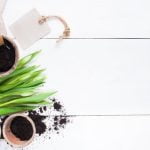Introduction
DIY backyard gardening is one of the greatest joys in life. It provides an opportunity to reconnect with nature and the earth, while also offering a great way to practice mindfulness and exercise creativity. There are countless varieties of fruits, vegetables, herbs and flowers one can cultivate in their own backyard. You can grow your favorite foods, create beautiful sculptures and designs with plants, learn all about composting, or simply enjoy being outside among nature. With DIY backyard gardening, you’ll have many opportunities to discover something new each day as you see your garden slowly make progress. The satisfaction felt at the end of it all will be truly worth it!
Gathering the Supplies You Need for a DIY Backyard Garden
Having a beautiful DIY backyard garden is an enjoyable and rewarding experience – stay organized by gathering all of the supplies you need for your project first. Start by considering the size and layout of your space; will it be divided into individual beds or have one large layout? Once you have chosen what fits best in your yard, measure out the area to determine how much soil and fertilizer you need. When shopping for supplies, check with local home improvement and gardening stores to find fencing, mulch, plants, grass seed, tools, and other accessories that you may want to include in your garden. Don’t forget essential items such as protective gloves so that your hands are safe while doing manual labor. Finally, invest in quality materials that not only last longer but can help minimize extra repairs and maintenance costs. Follow these steps and who knows – you could be well on your way to having a lush DIY backyard garden soon!
Picking the Perfect Spot for Planting
In order to be successful in DIY backyard gardening, it’s important to choose the right spot for planting. Depending on the size of your yard, you may have several potential sites to choose from. The best location will have plenty of natural light and be protected from extreme temperatures and strong winds. Also, if possible pick an area featuring soils that are loose, moist, and well-draining. Adding rich compost or soil amendments can also make the soil more suitable for planting. Additionally, try to consider where water runoff typically accumulates during rainstorms so that your plants don’t get inundated with water or washout due to flooding. You should also aim to avoid areas with large tree roots as this could quickly impact your plant’s health and growth. Lastly, be aware of plants growing in close proximity as a few varieties can spread their roots quickly through underground runners or vigorous self-seeding—both of which are undesirable depending on the type of garden being planted. With all these tips in mind, you should be able to find a perfect spot for planting in your backyard!
Selecting the Right Plants for Your Climate and Conditions
The first step in successful backyard gardening is selecting the right plants. When selecting plants for your space, you need to consider the climate and conditions of your area. Different climates have different growing seasons and require a variety of strategies like covering crops with plastic sheets or cloths to protect them in frosty temperatures or utilizing moisture-retentive mulch in hot, dry summers. If a particular species of plant isn’t suited to your climate, look into similar varieties that may thrive in the local conditions.
Climate and conditions also influence when you can begin planting certain types of flowers and vegetables. Depending on where you live, the likelihood of frost changes from year-to-year so research when the last frost is predicted for your area so that you can plan your garden accordingly. Hot climates can sometimes limit what can be planted during certain times of the year due to extreme heat and dryness – consider native species that are more able to withstand these tough weather points as well as employing soil conditioning methods like composting or shade structures like pergolas to provide relief from strong sunshine. Understanding the fundamentals of how different plant species behave in different environments will give you greater confidence when it comes time to plant.
Planting and Nurturing Your Garden
In addition to planing plants, you will also need to nurture your garden. Watering is key to the health and growth of your plants. Make sure you give each plant the right amount of H2O and check the soil frequently to make sure it is moist but not too wet. Additionally, mulching around plants helps keep moisture in and keeps weeds out. When adding mulch, be sure to use an organic material like leaves or straw. Finally, you should regularly remove dead leaves from underneath your garden’s foliage and prune any damaged branches that may appear out of season. By following these steps, you will ensure a healthy backyard garden for many seasons!
Checking in on Your Garden’s Progress
Keeping an eye on your backyard garden is an important part of enjoying its success. After all, you put a lot of time and effort into it, why not make sure it is producing the best results? One way to keep track of your progress is by keeping a gardening or plant journal to track the date of planting as well as the growth progress throughout the season. This way, you can document any successes or problems that occur with increasing accuracy. You’ll also want to carry out regular inspections to look for signs of disease and pests. Check for wilting foliage, discoloration and other anomalies that could indicate there’s something wrong with one or more plants in your garden. Being attentive to issues that arise early on will help you take action quickly and prevent further damage or infestations from occurring. Additionally, regularly watering and feeding your plants should be part of your maintenance routine so they stay healthy and continue to produce yields. When harvesting fruits and vegetables, make sure not to remove all at once, but instead leave some behind so they can keep maturing while still in the ground. Finally, periodically prune plants that are overgrown or have spent their season producing so you can effectively keep them thriving until next year’s bounty!
Learning From Mistakes and Making Changes
Diy backyard gardening can provide an exciting and rewarding experience. It can teach us patience, self-sufficiency, and how to appreciate nature. When starting a garden, it is important to account for the soil type, environment, necessary supplies, available sunlight and common challenges such as weeds and pests. Gardening experiments may not go as expected at first and mistakes are likely to happen; however, we can still learn from those blunders. Any mistakes provide a valuable opportunity for tweaking the original plans or strategies and make the gardening process better for future attempts.
Once you have made changes based on your mistakes when gardening in your backyard it is important to monitor their success over time so that you can be sure you are on track towards creating your dream garden. This element of evaluation will allow you to continually refine your practice or plan of action if need be. For example, If an area in the garden becomes prone to drought due to insufficient water then steps must be taken so that it gets additional water; perhaps by adding a layer of mulch or implementing an irrigation system into the design of your garden. Alternatively if certain pests are regularly destroying plants in one part of the backyard then it may be beneficial to choose species better suited for withstanding such conditions or find more effective methods of pest control. This sort of reflective practise ensures a raised success rate and helps minimize unforeseen issues which could derail progress on our goal growing space.
Maintenance and Troubleshooting Tips for Your Garden
Gardening can be a wonderful way of connecting with nature and Mother Nature. For those hoping to enjoy the splendor of gardening in their own backyard, there are some key maintenance and troubleshooting tips that are important to remember.
To keep your garden at its best, proper hygiene and preventative care is key. Regularly rake up leaves and debris that has fallen in the beds, especially after storms or heavy winds. This will help discourage pests and diseases from invading your plants. Additionally, stick to a consistent schedule for mulching, pruning, weeding, deadheading, and fertilizing as needed throughout the season.
Pests and weeds can quickly become problematic in gardens. To prevent infestations or invasions from occurring in the first place, check your plants regularly for signs of trouble—spots on the leaves or evidence of plant-eating insects—and be vigilant about removing or treating any problems as soon as possible. A diversity of companion plants can also help naturally ward off unwanted pests.
Finally, for gardeners looking for natural solutions for common garden ailments, many herbs can provide lasting solutions without using chemical products. Garlic oil mixed with water makes a great all-purpose fungicide spray while pyrethrin is highly effective against mites and cabbage loopers. There are many other organic measures that can be taken to ensure garden health.
Further Resources for DIY Gardeners
For even more information about DIY backyard gardening, gardeners can look to a variety of online and print resources. Gardening websites include Gardeners.com, which offers answers to common gardening questions as well as tutorials for various projects. The National Gardening Association also maintains a comprehensive database of detailed advice on everything from vegetable gardening to ornamental landscaping. Books are also useful in helping plan a dream backyard garden; titles like The Vegetable Gardener’s Bible and Edible Landscaping with Tropical Fruits cover almost every topic imaginable. There are even apps available tailored specifically for the home gardener, such as Plant Snapp, which helps users identify and select plants for their gardens based on factors like climate and soil type. All of these resources can help aspiring gardeners design an outdoor space that is beautiful, practical and organic!
Conclusion
Backyard gardening is a rewarding experience. Not only can it provide you with a sense of accomplishment, but it also gives you the satisfaction of providing yourself and your family with fresh and healthy foods. The DIY aspect adds to the whole process as it allows you to create something unique that is tailored to your own personal tastes, preferences and needs. There are a multitude of resources available these days when it comes to backyard gardening which can help make the entire process much easier and less overwhelming. From planning to materials selection, the internet has opened up an entirely new range of possibilities for DIY enthusiasts. So why not take full advantage of this opportunity and celebrate the joys of creating something amazing – by doing your own backyard garden!

Welcome to my gardening blog! I am passionate about plants and enjoy sharing my knowledge and experiences with others. In this blog, I will write about everything related to gardening, from tips on how to get started to updates on my own garden projects.





